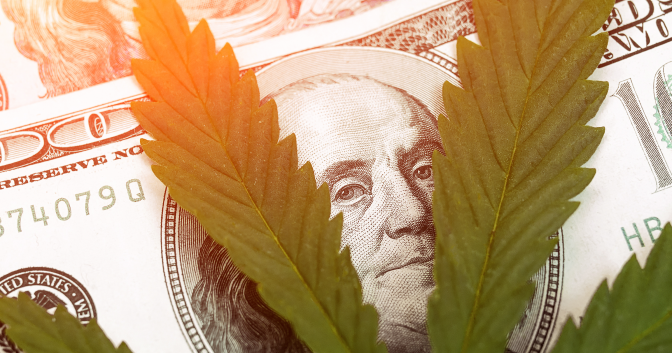Prohibition Money Trail Leads to Legalization

Money and economics drove the push for federal cannabis prohibition starting in the twilight of the Jazz Age. These forces continue to play a tug of war on both sides of the fight to end prohibition.
You can look at culture, politics, lifestyles or whatever. But to understand the ban on pot decades ago and the effort to make it legal now, you also need to follow the money.
Harry J. Anslinger, who led the fight to ban marijuana, arguably had an economic motive to make it illegal four years after the 21st Amendment repealed alcohol prohibition in 1933. He’d risen to prominence in the federal government in 1929 as assistant commissioner in the U.S. Treasury’s Bureau of Prohibition. With beer, wine and liquor once again legal to consume, he would’ve been out of a job if not for his successful quest to spread the myth of Reefer Madness as the first commissioner of the Treasury Department’s Federal Bureau of Narcotics. By scaring politicians and others about the supposed dangers of cannabis, Anslinger got the ball rolling on marijuana prohibition.
Many argue that this federal effort to eradicate cannabis helped fatten the bottom line of William Randolph Hearst by eliminating hemp as a competitor to timber interests held by the newspaper magnate. Hearst also had no problem using tales of marijuana debauchery by scary Mexicans and African Americans to sell more newspapers.
Synthetic fiber makers such as DuPont often get mentioned as beneficiaries of the push to outlaw industrial hemp as well. With hemp fiber out of the way, DuPont and other companies thrived with sales of materials like nylon.
These days, competing economic interests continue to shape the battle over cannabis prohibition. Mark Thornton, a libertarian and author of the book Economics of Prohibition, tells Freedom Leaf that public campaign-finance filings reveal businesses connected to the alcohol, pharmaceutical, tobacco and private-prison sectors routinely support the continuation of cannabis prohibition through political donations.
Drug cartels and other organized crime may also be funding the anti-cannabis effort, but it’s harder to trace since their money flows outside of public disclosure rules. “Prohibition imposes direct costs on everyone with respect to police, courts and prisons in the form of taxes,” Thornton says. “It also imposes enormous costs directly on the people who are arrested and put in prison.”
The industries that cannabis could transform include the pharmaceutical sector ($450 billion in revenues per year in the U.S., according to Stastista.com), the synthetic-fiber sector ($8 billion per year, according to IBISWorld.com), and the healthcare sector ($4 trillion per year). Cannabis would not necessarily take over these industries, but it could have an impact. It could lower the costs of many medicines and other products, causing revenues to drop in certain sectors.
Most research on pot prohibition tends to focus on the cost of law enforcement and incarceration, which was estimated at about $50 billion in a 2010 study by Harvard economics professor Jeffrey Miron. He now says calculating the effect of ending prohibition on overall GDP is “very hard to do.»
Miron, who is also a libertarian, supports cannabis freedom in order to protect individual rights, not because of any business benefits from ending prohibition. «We shouldn’t even care about the money,” he says. “We should be eager to legalize it even if the economic impact is zero.”
Yet the potential economic benefits offending cannabis prohibition remain a compelling argument in favor of legalization. In Colorado, the legal cannabis industry contributed to the economy to the tune of $200 million in taxes and more than $1 billion in marijuana-product sales in 2016. It’s created thousands of jobs since stores opened for adult use in 2014.
The economic forces behind legal cannabis—from dispensaries to edibles makers, equipment companies to service providers—continue to grow stronger. They will take a quantum leap forward once California, the sixth largest economy in the world, rolls out cannabis sales for adults next year.
Tom Adams, editor-in-chief of ArcView Market Research, says it’s hard to find a negative data point on the effect of cannabis on American business. “There would be huge economic and societal benefits to bring it into the real economy,” he notes. “The bottom line is we need to show this, because there’s still a lot of opposition based on 80 years of propaganda promoting cannabis as a negative drug.”
With ArcView/BDS Analytics projecting legal cannabis sales and related services producing more than $37 billion in economic output and creating nearly 400,000 jobs by 2021, pot’s pocketbook appeal is compelling.
If you enjoyed this Freedom Leaf article, subscribe to the magazine today!
